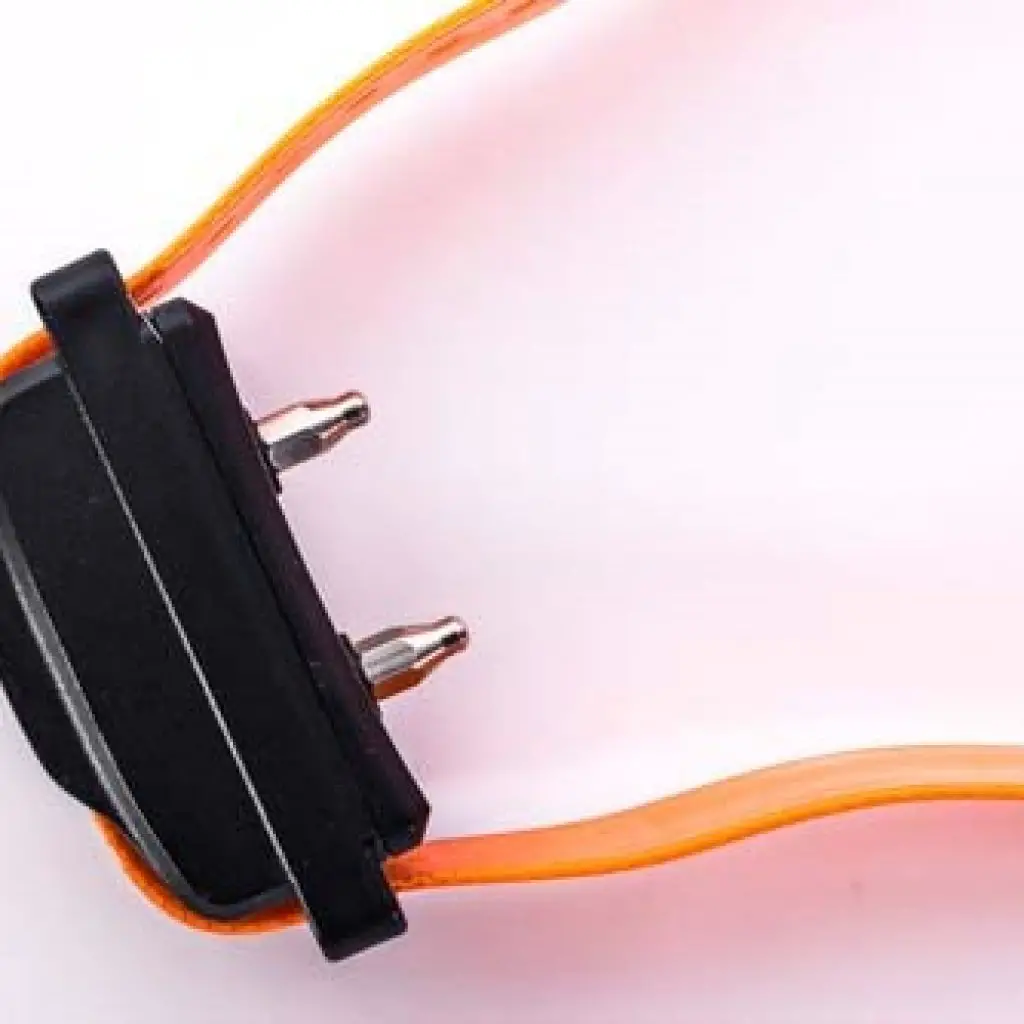E-Collars for Dogs: All You Need to Know
 E-Collars for Dogs: All You Need to Know
thegearhunt.com
E-Collars for Dogs: All You Need to Know
thegearhunt.com
In the dog lover’s community, e-collars, or shock collars, are still a topic that raises controversy. Some owners completely refuse to use them, while other owners are of the mind that there is a place and time for them. Then you have those who still debate whether or not these collars are even humane. To that end, today we will go over a bit of everything regarding these collars, including the science behind them and why these collars cause so much controversy.
By this time, most people know that these electric collars have been the topic of quite a few debates where dog welfare is concerned. There are even studies that have been done that point to their undesired effects and the negative consequences, and even some that show that they are effective. Even so, in many countries, they are totally banned. The opinion of experts in this arena isn’t anywhere near consistent though. There is literature that points to harmful side effects while others tout them for being humane and useful.
What is a Shock Collar for Dogs and How Does it Work?

Shock collars also go by the names remote dog training collars, e-collars, or electric collars. They are essentially a device that goes around the neck of a dog. This device utilizes a short burst of electricity, also called stimulation, that is meant to correct negative behavior in the animals and to train them. The e-collar fits right against the neck of the dog and features conduction points that are meant to be flush against the skin.
This device has its origins back in the 1960s. Back then, it was used as a training tool for hunting dogs. Those original ‘’Zap collars” (their original name), were quite a bit more powerful than what you can find on the market today. That being said, the scientific evidence regarding their safety and efficacy remains mixed.
As with everything else in life, when it comes to using these devices, there are pros and cons. With that in mind, let’s dig a bit deeper while we take a quick look at the science behind them, their disadvantages and their advantages.
Here is What One Looks Like:
The conduction points on the e-collars give the dog an electric shock that can vary in duration and intensity. This shock is controlled by either pre-settings in the collar itself or through the remote control that the handler uses. There are different levels of ‘stimulation’.
Some experts, including Stephen R. Lindsay, author of the “Handbook of Applied Dog Behavior and Training, Vol. 3”, establish a few aspects on how these collars work quite well when it comes to deterring dogs from undesired behavior and can be quite effective when used for training due to them being able to give the dogs a negative reaction for behavior that is undesired. Think about it like someone slapping your arm each time you try to get a cookie. You would very quickly learn not to reach for any cookies. It is the same concept.
Like most creatures, dogs will always try to avoid negative things and the intelligence they have allows them to recognize actions that lead to negative consequences. This is how dogs learn that they need to not do a specific action if they want to avoid being shocked.
A study that was conducted at Blackwell analyzed using these collars and they concluded that most dog owners are ignorant or confused when it comes to training dogs. This includes differences between positive and negative punishment, as well as positive and negative reinforcement, which was found to be the main reason people choose to use e-collars during training.
Several Types of Shock Collars
There are quite a few different models of shock collars and three different types. Some of them respond to a stimulus while the others respond to a remote activation.
A – B Shock Collar with Stimulus Response
These collars respond to certain types of behavior and can be broken down into a couple of sub-categories. Shock collars that work on stimulus-response are nearly always used as a deterrent for barking or as collars for invisible fences. Both of these work similarly. These e-collars will initiate an automatic shock in response to the undesired behavior from the animal. As an example, passing through the boundary of set parameters in the yard, or barking, will stimulate a shock. This will be based on the settings in the collar.
C Shock Collar with Remote Activation
This is the type of e-collar that most dog owners purchase. Collars that utilize remote activation are typically used for dog training that is more general. The shock from these collars is actually initiated by the dog’s owner or trainer, who is holding a remote control. The duration and level of shock will also be set by manually pre-setting the programs on this remote in real time.
The Stimulation or Shock
Different shock collars will give different levels of shocks, and these can vary drastically. Typically, the strength of the shock can be anything from 7 milliamps to 1250 milliamps. That said, what does that mean?
As a reference, 10 milliamps are enough to cause a bit of pain for us as well as in animals. The shock from 50 – 75 milliamps tends to be at the very top of the pain threshold for humans. 200 milliamps can actually be fatal. Knowing this, it is easy to see that the ‘slight shock’ that e-collars deliver isn’t always just a ‘slight shock’. The shock from these collars lasts anywhere from 1 to 30 seconds. E-collars also have what is known as ‘volume’ dials’. These allow for the actual strength of the shocks to be increased in the event that even while being shocked the animal continues with the undesired behavior.
Most dog owners won’t want to cause any pain for their animal, but as indicated in the study mentioned above, the primary issue is that the owners tend to be unaware of how powerful the shocks from these collars are and don’t have any idea of the pain different levels of shocks can cause, or even how much they tend to increase the strength when they turn up the volume and what that does to the animal. Since the owners don’t have any idea about these things, they don’t have any way to determine when or if the collars malfunction.
Do They Work?
At first glance, it seems as if these e-collars can be an effective tool when used for training undesired behaviors out of dogs. That is, if we just ignore that controversial issue regarding causing pain and discomfort to the animal. All they tend to care about is that they get the dog to behave in the manner they prefer.
Advocates of shock collars claim that they are the best and most effective method of fixing behavioral issues with their dogs. They also make the claim that these collars will cause less damage to the long-term welfare of the animal when compared to other methods of ‘punishment training’. It is also worth noting that there are quite a few different types of training collars for dogs aside from this type.
Other Training Methods
Keeping in mind that the efficacy of shock collars is controversial at best, it is critical to look at other techniques and methods to see if they are any more effective than the e-collars. A claim has been made by the British Veterinary Behaviour Association that says that reward-based training can produce better results than what we have seen with e-collars and other types of negative training. That said, there isn’t any evidence for this being the case. Actually. It seems that negative reinforcement and negative punishment techniques are effective when it comes to correcting behavioral issues in dogs, especially when they are used together with positive reinforcement.
Going back to the Blackwell study mentioned above, there was a survey done of people who owned dogs and the efficacy of their techniques for training. Those dog owners said that the more humane methods of training are more effective than using an e-collar. They also reported that what are known as ‘citronella collars’ were essentially more effective than any electronic bark collars when used to correct specific behaviors in the animals.

In these cases, it is entirely possible that the perception of the method they used for training may have influenced the opinion of the user and their view of the efficacy of the methods they used. All of that being said, there just doesn’t seem to be a single good study that evenly compares the use of positive reinforcement against the shock collars and punishment training for dogs.
However, it is clear that there are a few negative consequences to these collars, and this might just be a good enough reason for people to stop using them and switch to training their dogs in alternative ways.
If shock collars for dogs would prove that they are effective in any research in the future, they still won’t create a willingness in the animal to learn or facilitate a relationship between you and your pet that is healthy. This is due to the fact that dogs will learn from reinforcement that is negative, but the learning is achieved simply by a desire to avoid any pain. This means that we need to have some sort of positive reinforcement. This type of reinforcement will teach the animal when the behavior they are exhibiting is desirable without any of the undesirable effects that go hand in hand with negative reinforcement.
For example, if a child is learning to read and they mispronounce a word, you wouldn’t pinch him. You would tell him the correct way to pronounce the word. After that, you would ask him to try it again. When he does pronounce the word correctly, you would then praise him for trying and being successful. In the above example, you don’t break the child down for mispronouncing a word, but you praise him when he succeeds. Training like this engenders a willingness to actually try, gives them confidence in their abilities, and the trust that you will always show them what you desire from them.
How Do You Apply this with Your Dog?
Reinforcement that is positive, such as belly rubs, praise, or treats, will create a more trusting and stronger relationship. It will direct the dog in their behavior as opposed to enforcing negative behavior.
Common Shock Collar Myths
The main reason that there is as much controversy surrounding these collars as there is, is because of the amount of misinformation that exists about them. If you want to use a training tool on your dog, especially one that has so much controversy surrounding it, you need to be responsible and do your due diligence in terms of research.
Since it just takes a few shocks it isn’t really negative.
 People who tout the use of these collars say that it only takes a few shocks for the animal to learn what is expected and what isn’t. This might be true, but those few shocks are also all it takes for the dog to associate you with the pain and with what you are asking them to do. While you might not always ask the animal to comply with future commands by using the collar, the animal will carry out those commands anyway due to fear.
People who tout the use of these collars say that it only takes a few shocks for the animal to learn what is expected and what isn’t. This might be true, but those few shocks are also all it takes for the dog to associate you with the pain and with what you are asking them to do. While you might not always ask the animal to comply with future commands by using the collar, the animal will carry out those commands anyway due to fear.
E-Collars Make Dogs Learn Faster
It might seem like collars of this nature are teaching your animal at a quick pace, but you need to know what exactly it is that they are teaching. They don’t teach the animal what is expected of them. They teach that when they do something you don’t like, they will feel pain.
This is an aversion as opposed to training.
Animals will avoid whatever it is that causes them pain because it hurts, not because they learn behavior that is desirable. This goes right back to the myth just discussed. They aren’t learning to not do the behavior that isn’t wanted. They are being taught that you can and will hurt them and that you aren’t to be trusted.
E-Collars can be the Perfect Tool for Some Dogs
Many of the proponents of e-collars will tell you that they can be the ideal tool when it comes to training some dogs. These are the dogs typically labeled as stubborn or hard-headed. The reality is that the dogs can be trained by using other methods, the trainer just isn’t trying to decide which of the available methods to use.
Each and every dog can be trained while not using an e-collar. It is just the lazy trainers that fail to locate a good way to motivate the animals and they might want fast results and feel as is this is the way to do that.
If These Collars Were So Awful, They Wouldn’t be on the Market
Some advocates of these collars make the claim that if they were so awful, you wouldn’t be able to find them on the market.
It is important to remember what the word ‘awful’ is referring to. The word is used to describe the shock that is delivered by the collars. The belief is that the shock’s strength isn’t enough to cause serious and lasting harm.
Even if that were the case, it is more than enough to create an experience that is negative. This negative association of you, training, and pain, in general, is awful due to the fact that it can teach the animal to both be afraid of the user and to expect pain to be an aspect of any future training.

Only Bad Owners of Dogs will Use a Shock Collar
Shock collars might or might not be a tool that is beneficial when it comes to training a canine, but it is critical to know that using a collar of this nature doesn’t automatically mean that the owner of the dog is a bad person. Many owners of dogs use training tools such as this because of the fact that they have seen other people who own dogs using them or maybe even because they have been told how effective they can be when it comes to training a dog.
As reported in the Blackwell study, there is actually a percentage of people who own dogs who actually use these shock collars on their dogs and that most owners will use alternative methods to train their canines. Additionally, it seems to be that most people who own dogs truly believe that this type of training device is both efficient and safe, especially because they are used commonly for training hunting dogs and police dogs.
Are they safe? Are they humane? Studies on the subject haven’t come down on one side or the other on these matters. You might try it and find that you love them and that you wouldn’t turn the volume all the way up anyway. On the other hand, you might be opposed to even getting near one of them. The choice is entirely yours.
Sources
- YouTube, How to Use E-Collar Training the Right Way – Dog Training with America’s Canine Educator
- K9 of Mine, Best Dog Cones and E-Collars to Help with Healing
- Wide Open Pets, Everything You Need to Know about Training with E-Collars
- Canine Journal, 8 Things You Need to Know Before Buying a Shock Collar















